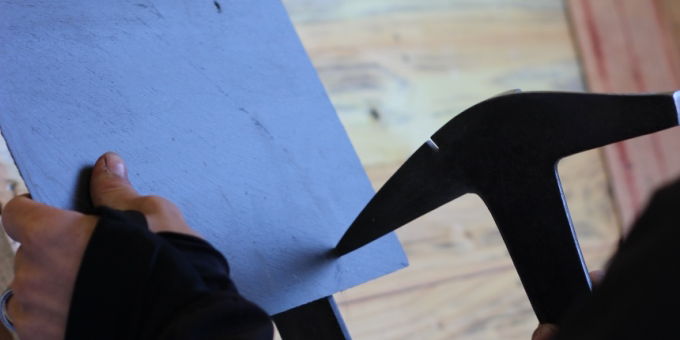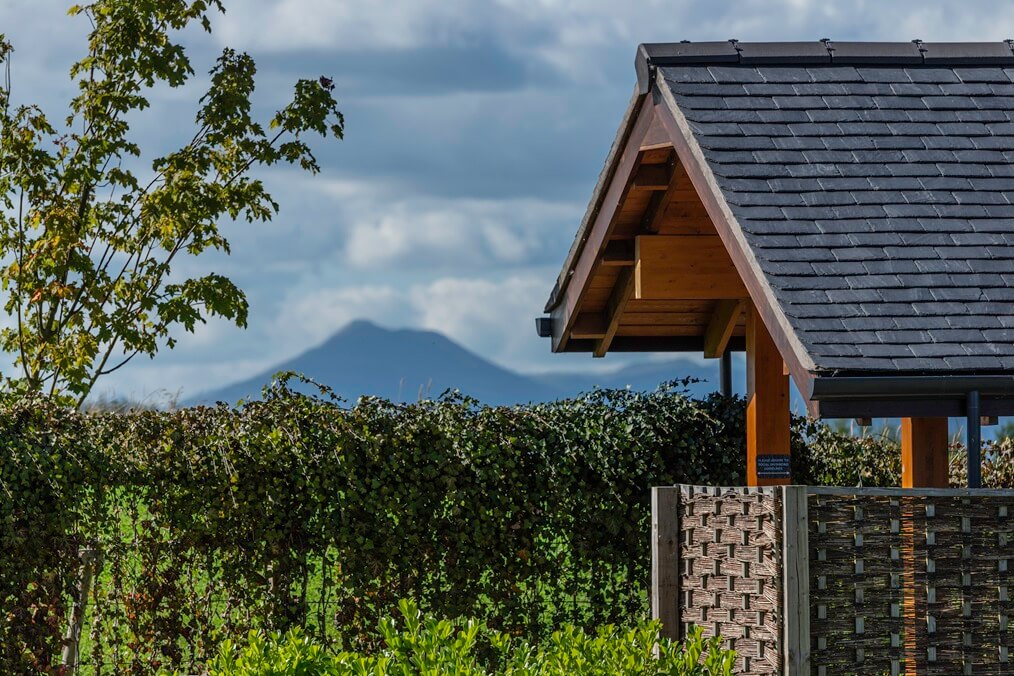Fixing guide for natural slate roofers
CUPA PIZARRAS has developped a fixing guide in order to help natural slate roofers.
There are two methods of fixing natural roofing slates: nailing and hook fixing.
Fixing with nails
Slates can be supplied preholed. However, if on-site holing is undertaken, the following methods should be used.
Holing (centre fixing)
Hole from the bed of the slate (its reverse), this allows the nail head to be located in the recess on the face of the slate, which is created by the holing process.
Each slate should be holed twice.
The head of the slate should lay approximately halfway on to the batten (i.e. 25mm on to the batten) leaving 25mm to nail into.
A clearance of 6–12mm is recommended. Holes should be located between 20–25mm from the long edge of the slate.
The underlay is then fixed and the roof marked to the batten gauge. This may require adjusting in order to create equal course numbers. The required lap should only ever be increased not decreased.
Holing (head fixing)
Head or shoulder fixing is only acceptable for small or heavy slates.
This practice is more common in Scotland. In Scottish practice it is common to nail slates to softwood sarking boards using a combination of shoulder-nailing and centrenailing to resist wind uplift.
If this method is adopted it is recommended that every third course is nailed twice.
Holing by hand
Wherever possible, machine holing is preferable. Holing by hand should only be considered when a small amount of slates need re-holing for repairs or when a hole needs to be repositioned in-situ.
To hole a slate with a spike hammer, position the slate flatly over a narrow iron.
When measuring the position of the holes ensure the thinner end of the slate is at the top when fixed. Holing should always be from the bed of the slate (its reverse) and each slate should be holed twice.
Holing by machine
If slates are machine holed it is recommended that only one slate be holed at a time.
If the machine uses a punching method then attention should be paid to the risk of damage.
The holing machine will need to be well maintained and adjusted regularly. For this reason a boring method is preferable. Nails are required to be 20-25mm longer than two thicknesses of slate.
Nail head diameter should be at least 10mm. At the eaves course it is best to use nails that are longer, especially if there is also a sprocket.
Fixing with hooks
An alternative method of fixing slates is the use of slate hooks; however, hooks should not be used below a 25º roof pitch.
In addition below a 30º degree pitch the hooks should have crimped shanks to reduce the capillary rise of water at the perpendicular joints between slates.
The use of hooks on roofs with a pitch above 75º requires special conditions. When fixing slates with hooks all perimeter slates should be hook fixed and nailed.
For more information, please visit our roofing slate guide.
Need expert advice? Our team is here to help! Fill out this form, and we’ll guide you through everything you need to know.




